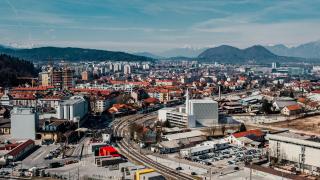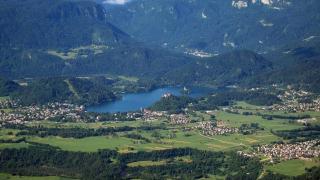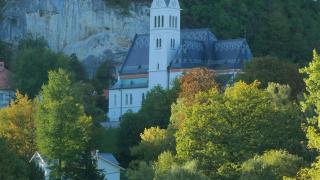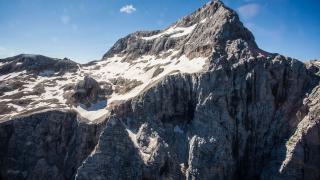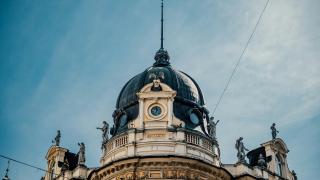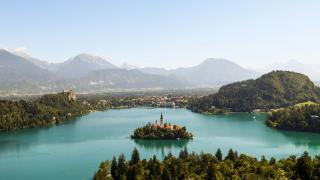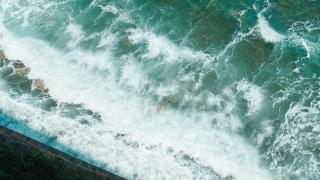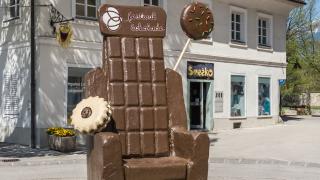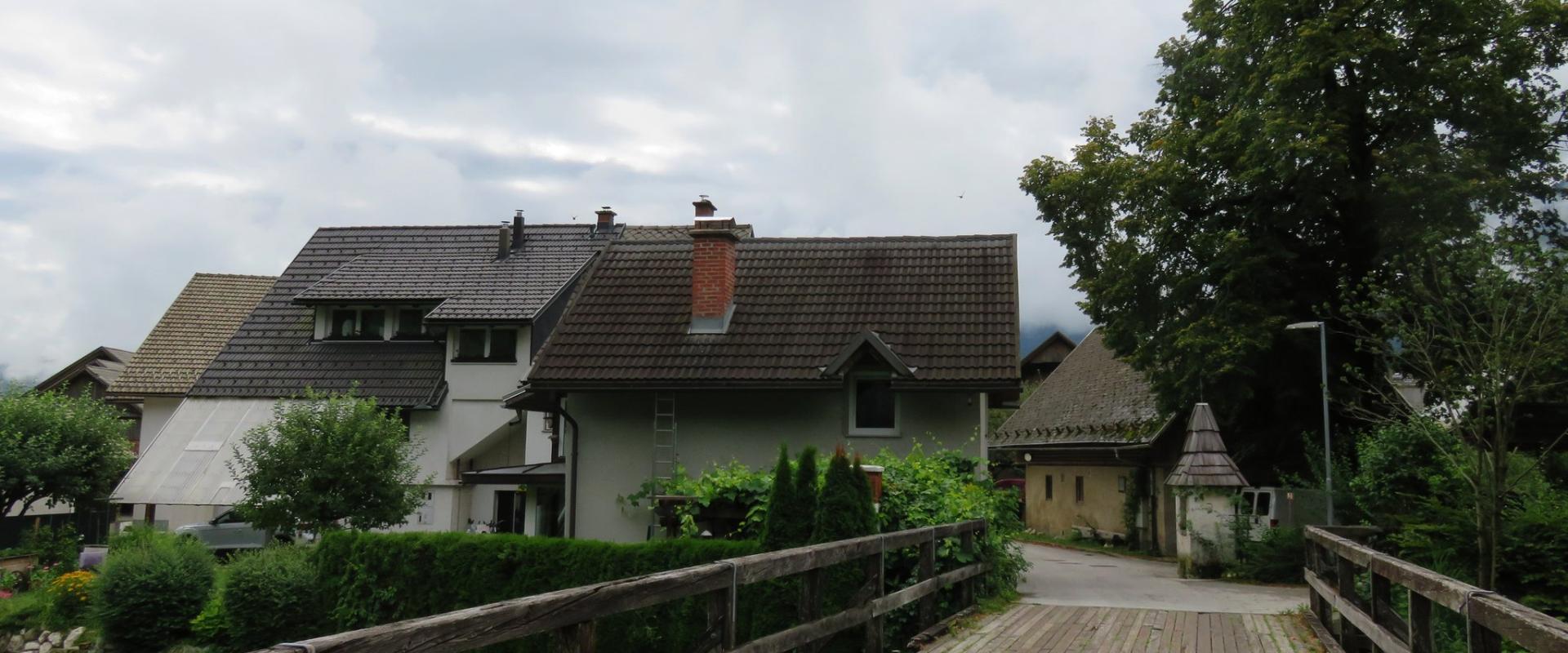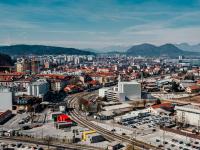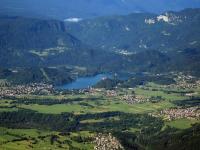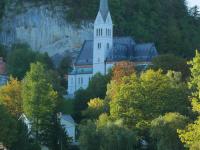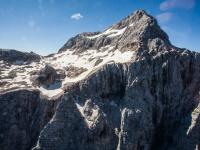Slovenia’s Seasons: Packing by Month
Slovenia has four seasons. Winters (December–February) bring snow, especially in the Julian Alps and Kranjska Gora. Pack insulated jackets, waterproof boots, gloves, and thermal layers for these regions. Ljubljana and Maribor see less snow, but mornings are cold.
Spring (March–May) and autumn (September–November) are unpredictable. Rain is common in Ljubljana and the Soča Valley. Bring a waterproof jacket, rain pants, and layers. Temperatures can change 10°C in a day.
Summer (June–August) in Piran and the Adriatic coast is hot and humid. Pack light clothing, a sun hat, and high-SPF sunscreen. The Alps stay cooler; bring a fleece for evenings. Hiking in Triglav National Park requires sturdy, waterproof shoes year-round.
Microclimates are common. Bled’s lakeside can be 5°C cooler than Ljubljana. The Karst region is windy; pack a windbreaker. Sudden storms hit the mountains, even in July.
Distances are short—Ljubljana to Lake Bohinj is 80 km, but weather can differ. Local shops sell rain ponchos for €5–€10. Pharmacies in Ljubljana stock insect repellent for the marshes. Always pack for rain, sun, and cold, even in summer.
Outdoor Adventures: Gear Up Right
Hiking in the Julian Alps or Triglav National Park requires waterproof hiking boots. Trails are rocky and often wet, even in summer. Expect muddy sections after rain, especially near Lake Bohinj. Sturdy boots with ankle support are essential for routes like the Triglav ascent. Local shops in Bled and Kranjska Gora rent boots for €8–€12 per day.
Weather in Slovenia’s mountains changes fast. Pack a waterproof jacket and rain pants. Sudden storms are common from May to September. Rain gear is sold in Ljubljana outdoor stores, starting at €30.
For cycling the Parenzana or Soca Valley, bring padded shorts and gloves. Bike rentals in Bovec or Tolmin rarely include these. Helmet rental costs about €5 per day.
Rafting on the Soca River requires a swimsuit and quick-dry towel. River temperatures average 12–15°C in summer. Towels are not provided by most outfitters.
For Lake Bled or thermal spas (e.g., Terme Čatež), pack a swimsuit and flip-flops. Entry to lakes is free, but spa entry starts at €15.
Daypack essentials: 1.5L water bottle, snacks, map, sun hat, and a light fleece. Trail distances vary; most day hikes are 8–15 km.
City Strolls & Cultural Stops
Ljubljana, Piran, and Maribor have cobblestone streets. Wear sturdy walking shoes; sneakers or flats with grip work best. Smart-casual attire is expected in Ljubljana’s restaurants and at SNG Opera performances. Men wear collared shirts; women wear dresses or trousers. Entry to churches like St. Nicholas Cathedral requires covered shoulders and knees. Bring a scarf or light shawl for this purpose. In Škofja Loka or Ptuj, traditional villages, modest clothing is appreciated. Weather shifts quickly in Slovenia’s cities. Pack lightweight layers: a fleece for evenings, a thin sweater for mornings. In May and September, temperatures can drop to 10°C at night. Rain is common, especially in spring and autumn. A small umbrella or packable raincoat fits easily in a day bag. Umbrellas cost €5–€10 at local markets. Carry a water-resistant daypack for valuables and a reusable bottle; tap water is safe in all cities. Slovenian museums and galleries often have cloakrooms, but space is limited. Limit bags to under 30 liters for convenience.
Local Customs & Packing Pitfalls
Avoid shorts and sleeveless tops in rural churches. Modest dress is expected in Škofja Loka, Ptuj, and Bled’s churches. Packing light is essential. Most Slovenian rental cars are compact; trunk space is limited. Trains and buses have narrow aisles and small luggage racks. Many guesthouses in Ljubljana and Lake Bled have no elevators. Slovenia uses type C and F plugs (230V, 50Hz). Bring a compatible adapter; US/UK plugs will not fit. Outdoor gear is common in towns like Kranjska Gora and Bohinj. Hiking boots and rain jackets are acceptable in public spaces, but not in fine restaurants. Overpacking is a mistake. Self-service laundromats are available in Ljubljana (from €5 per wash). Many guesthouses offer laundry for €10–€15. Pharmacies (lekarna) and Mercator shops stock toiletries and basics. Do not pack camouflage clothing; it is associated with military use.
Smart Packing: Essentials & Extras
Travel documents: Carry your passport and a printed copy of your health insurance. Some accommodations in Slovenia require a passport scan at check-in. EU citizens need only a national ID.
Insurance: Medical care is good, but travel insurance is recommended. Pharmacies ("lekarna") are common in cities, less so in rural areas.
Reusable water bottle: Tap water is safe and excellent quality across Slovenia. Public fountains are common in Ljubljana and Bled. Bottled water costs €1–2 in shops.
Sun protection: Summer UV is strong, especially at Lake Bled and the Soča Valley. Bring a sun hat, sunglasses, and SPF 30+ sunscreen. Sunscreen costs €7–15 in local stores.
Bug spray: Mosquitoes are common in the Ljubljana Marshes and by the Sava River in summer. Local bug spray ("sprej proti komarjem") costs €5–8.
Medications: Bring personal prescriptions. Over-the-counter painkillers (e.g., Lekadol) are available at pharmacies.
Adapters: Slovenia uses type C and F plugs (230V). Adapters are sold at Mercator or Müller for €5–10.
Extras: Download a Slovenian phrasebook or app. English is spoken in cities, less so in small towns.
Last-Minute Checklist & Local Shopping
Quick checklist for Slovenia:
- Power adapter (Slovenia uses type C/F, 230V)
- Rain jacket; sudden showers common in Ljubljana and Bled
- Reusable water bottle (tap water is safe everywhere)
- Euros in small bills; some rural shops do not accept cards
- Lightweight scarf for church visits
Where to buy replacements:
- Outdoor gear: Hervis (Ljubljana, Maribor), Iglu Šport (nationwide)
- Clothing: H&M, C&A, and local stores in BTC City (Ljubljana)
- Essentials: DM Drogerie Markt, Müller, Mercator supermarkets
Easy to find:
- Hiking socks, rain ponchos, sunscreen (from €3–€10)
- SIM cards at Petrol stations and Telekom shops
Hard to find:
- Large shoe sizes (above EU 45)
- Specialty outdoor brands (limited selection)
Souvenir packing tip:
- Wrap Bled cream cake boxes or ceramics with clothing; airport security may inspect liquids (honey, schnapps).
